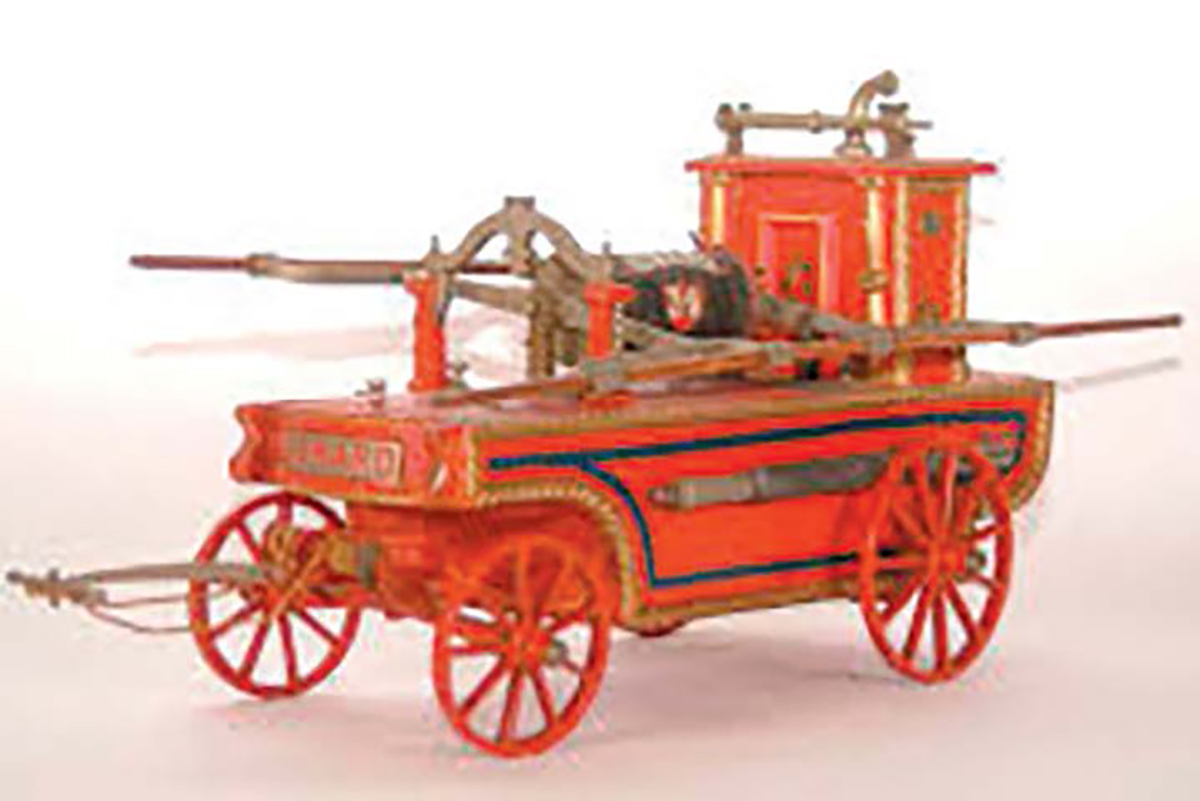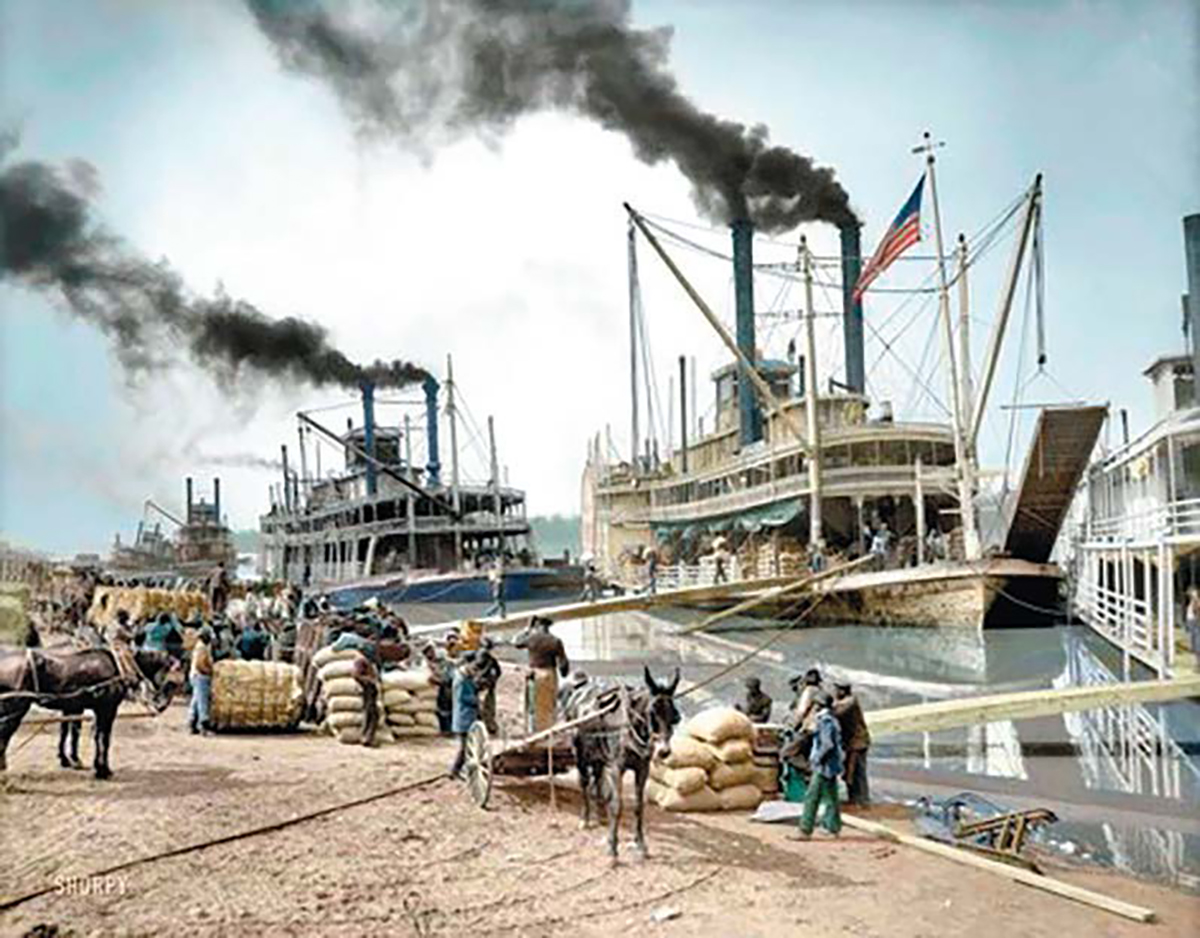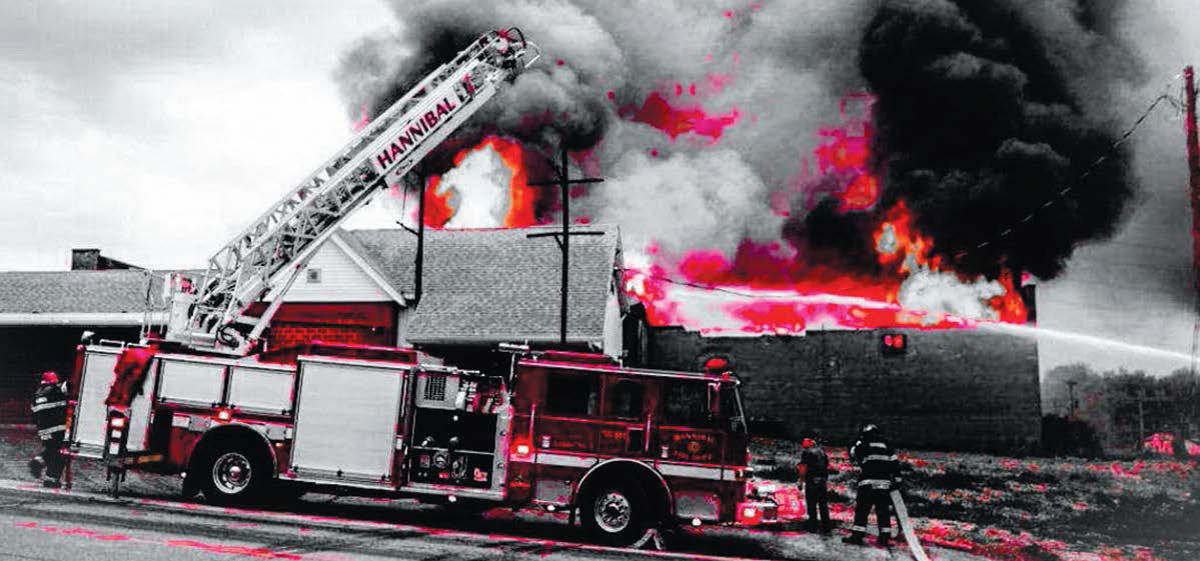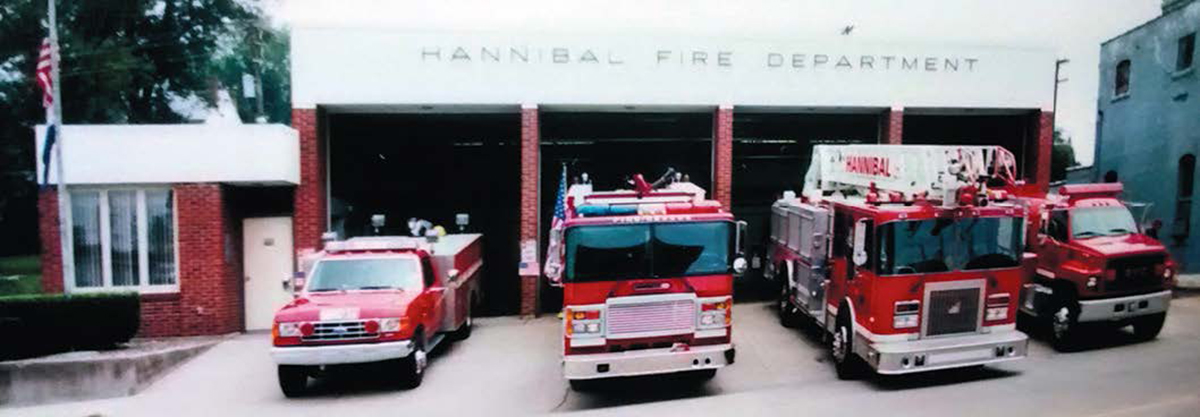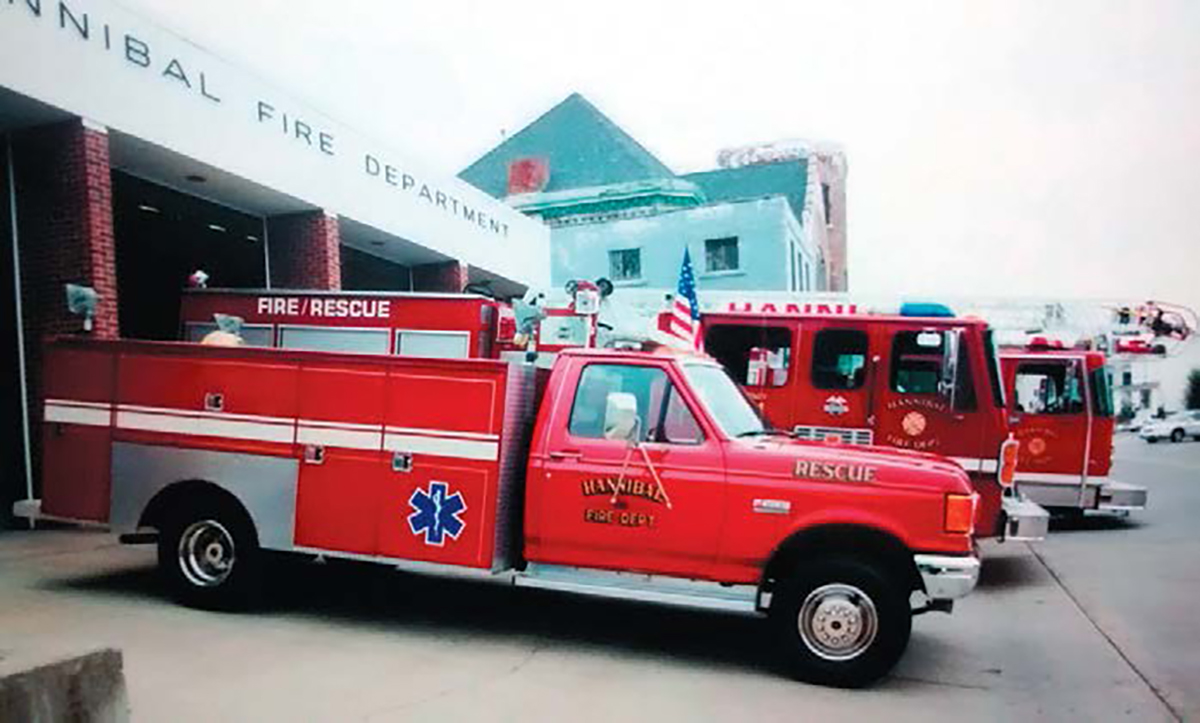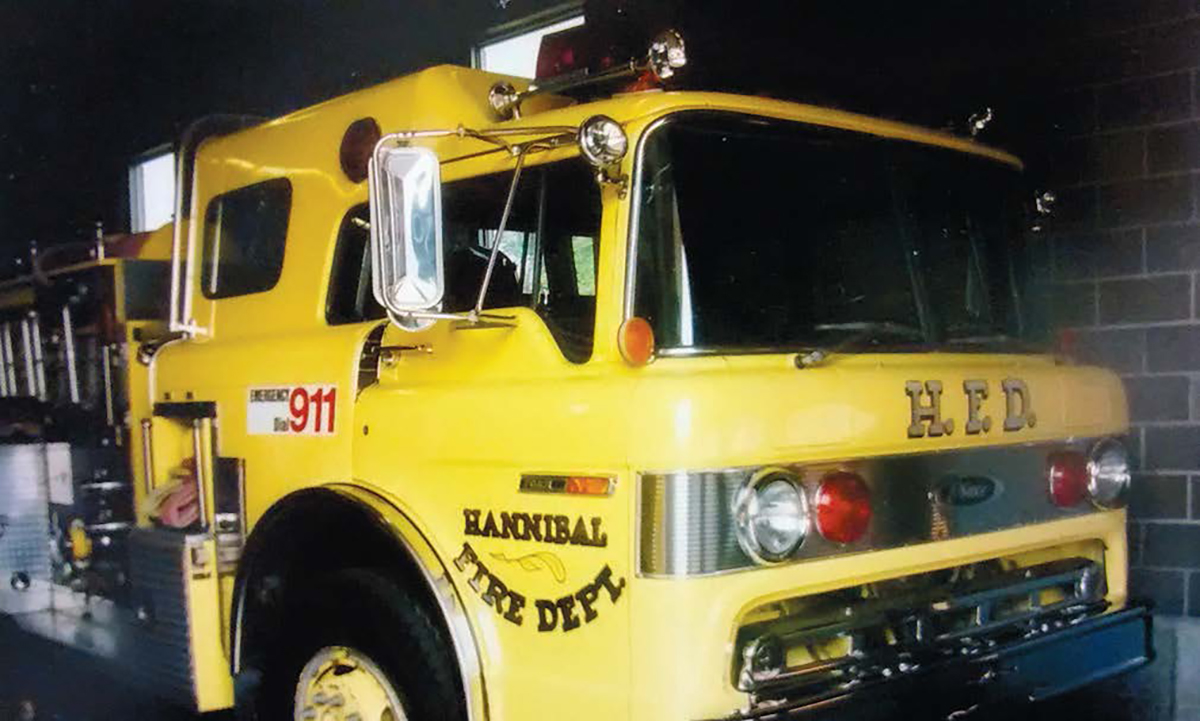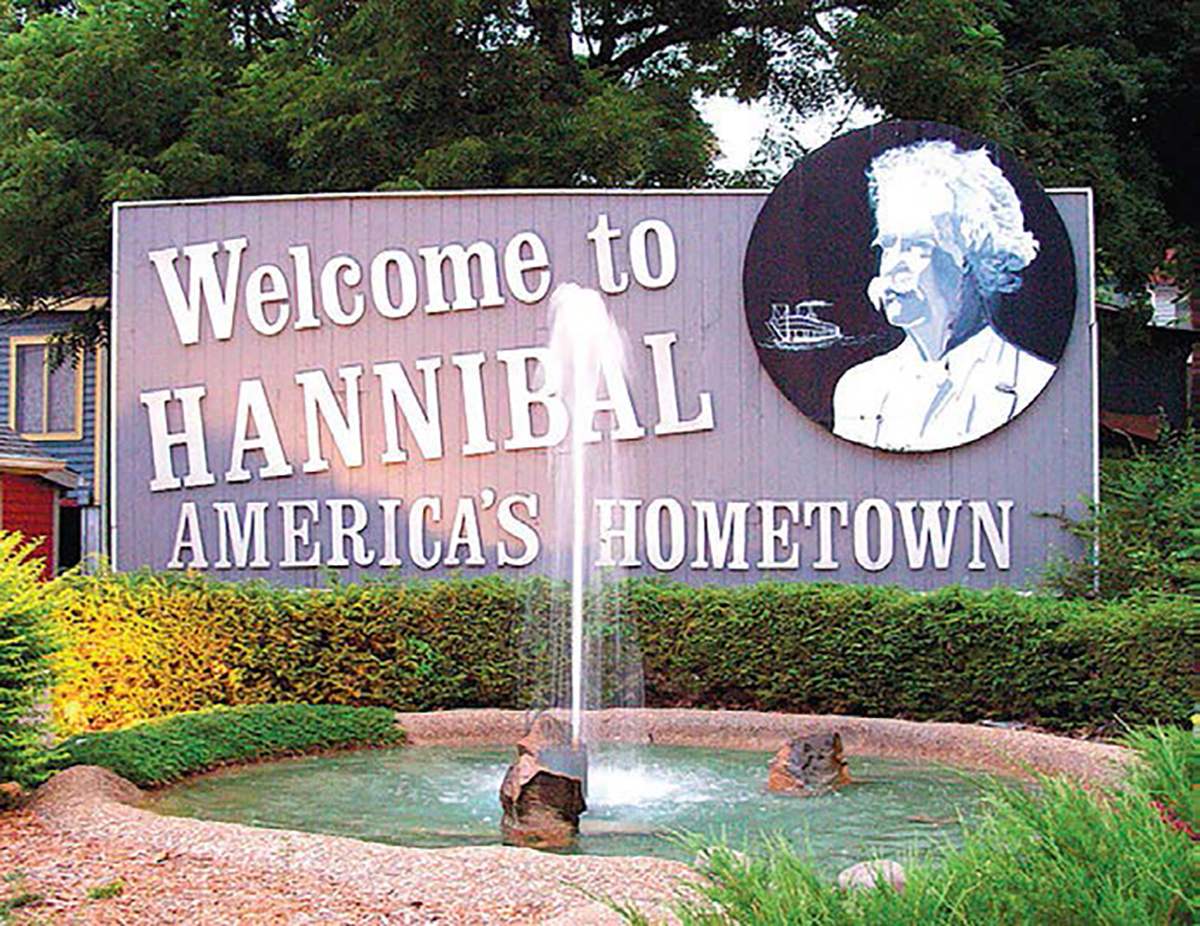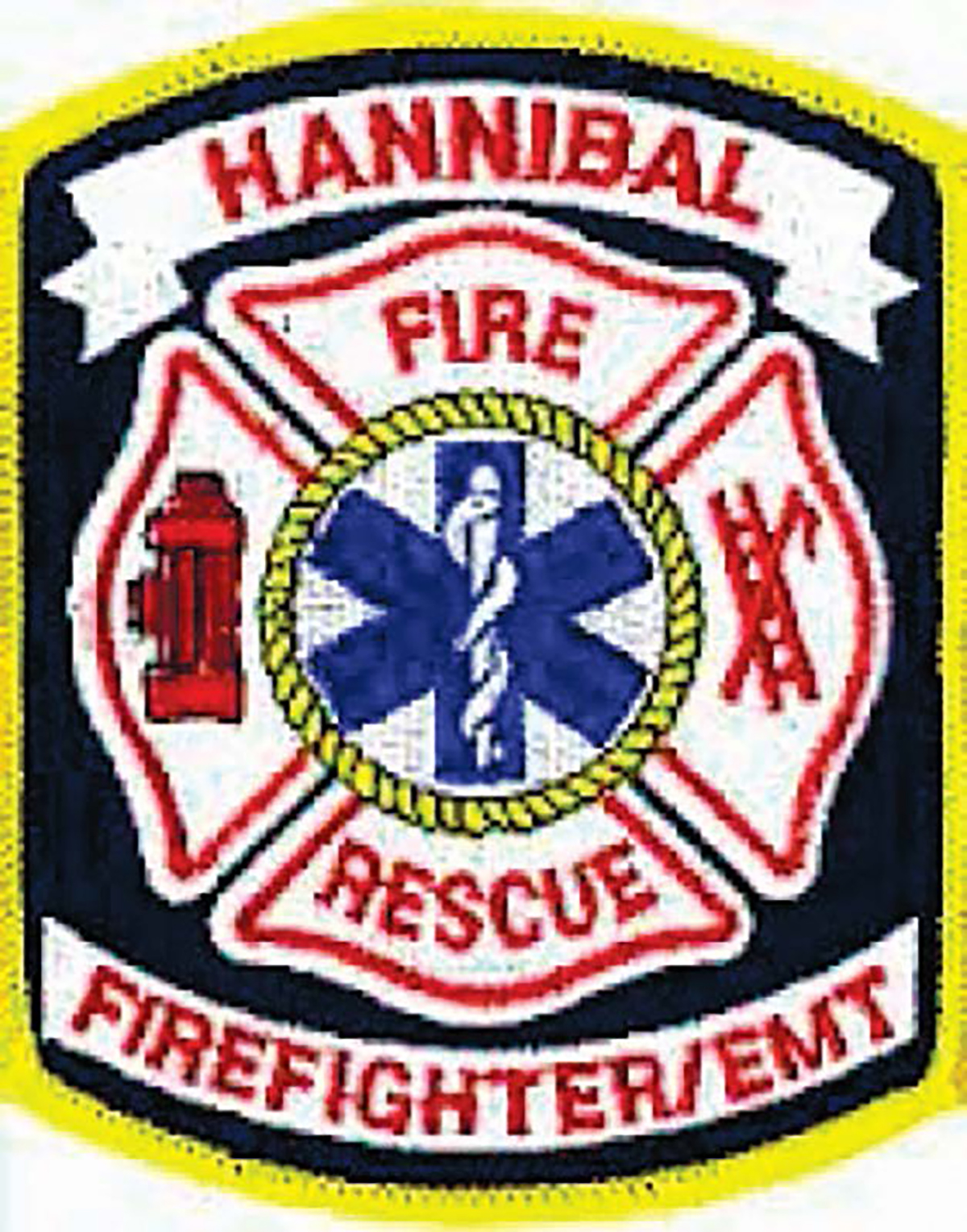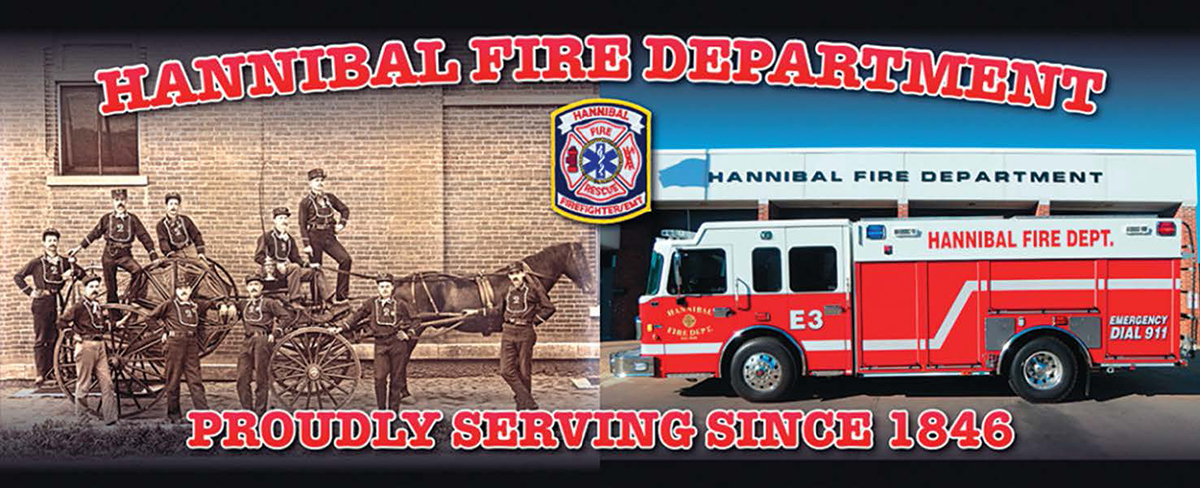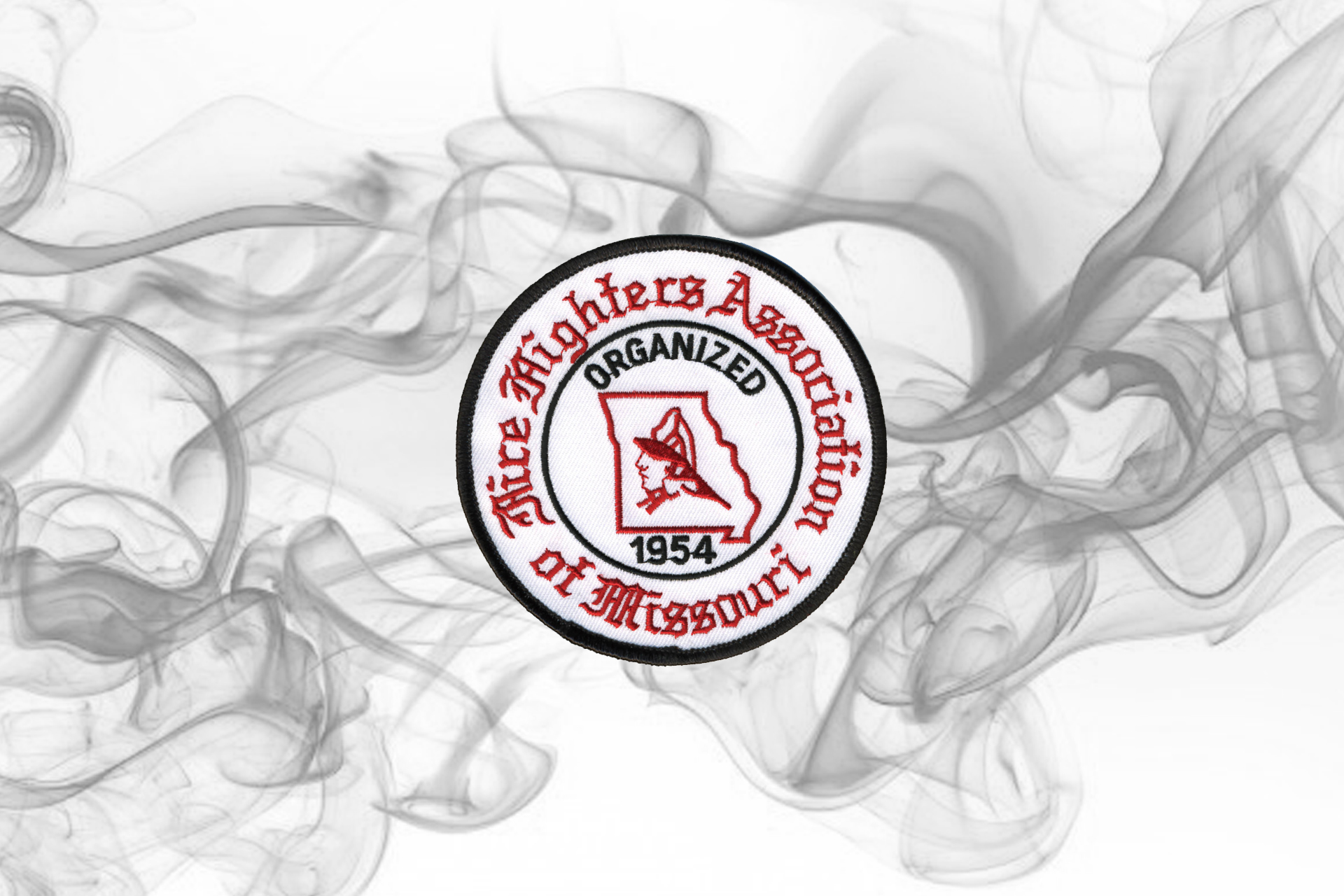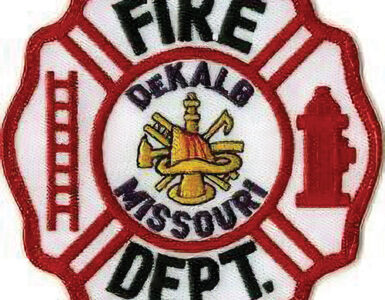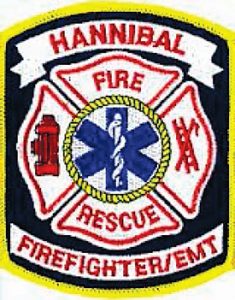
I really doubt that very many readers of the FFAM newsletter have to be reminded that Hannibal is one of our states oldest and most famous towns. From the time most of us were kids we read the Adventures of Tom Sawyer and Huck Finn in school and learned those iconic stories were based on things that took place in this little village on the Mississippi River.
Moses D. Bates founded Hannibal in 1819. It soon became a principal docking port for steamboats, flatboats and steamers traveling the upper Mississippi. In 1845 Hannibal had achieved city status and the following year the Hannibal Fire Department came into existence.
Many well-known individuals have called Hannibal home, including William Lear, the designer of the Lear jet. Also counted among the famous sons are Congressman William Henry Hatch and Navy Admiral Robert E. Coontz.
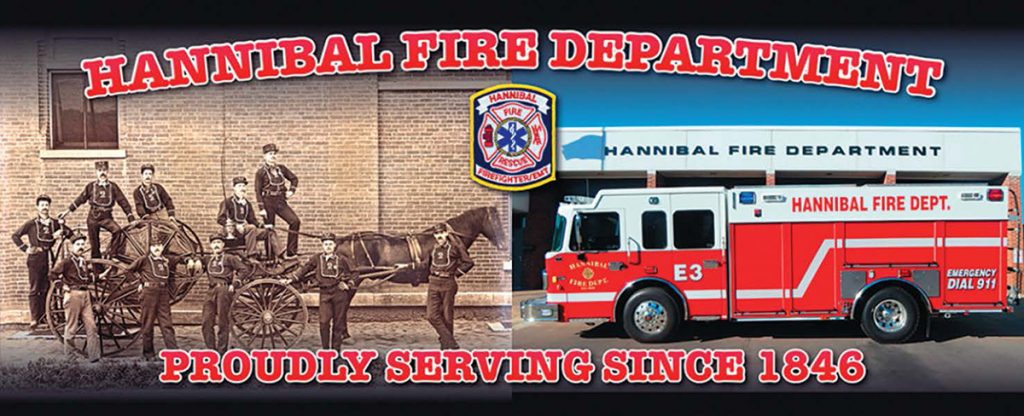
By far Hannibal’s most well know resident is Samuel Langhorne Clemens, known world wide as Mark Twain. Clemens was born in Florida, Missouri, and at age four his family moved to Hannibal. The adventures of Huckleberry Finn and other works by Clemens put this river town on the map forever. It continues to provide exceptional opportunities for the community in tourism.
It is fitting and proper for us to feature the Hannibal Fire Department this year as the city is celebration its bicentennial, two hundred years of progress and success on the banks of the mighty Mississippi. Noteworthy is the fact that Hannibal was established two years before Missouri became a state.
Hannibal hosts hundreds of events every year including National Tom Sawyer Days and is a great tourist destination. The community has always taken great pride in its historical, cultural and literary heritage.
One of the most epic attractions in the area is Mark Twain Cave. A history of the cave would require more pages than this newsletter would allow. A hunter, Jack Simms, discovered it in the winter of 1819/1820 when his dog chased an animal into the small mouth of the cave. According to folklore, it was also used as a secret Confederate weapons storage cache during the American Civil War and a hideout for the legendary outlaw, Jesse James.
If you visit today, it is owned by the Coleberd Family, the late Chief Jim Coleberd and his wife Linda. In addition to the caves, gift shop candle shop and winery, you can see the extensive collection of their fire memorabilia that has recently been donated to the Firefighters Museum in Kingdom City and will be relocated when the building is completed.
HANNIBAL FIRE DEPARTMENT IN THE EARLY YEARS
Thanks to some very efficient record keeping and a few articles from the Hannibal Courier Post by Mary Lou Montgomery, the history of the Hannibal Fire Department since 1846 is very well documented.
As is many communities across our country, the formation of the fire department was born out of disaster. This river community in 1846 consisted of clusters of frame buildings in close proximity to one another. Since many of the commercial properties dealt with the business generated by arrival of and departure of steamboats, they were close to the river.
The great fire of 1846 occurred in July and took its toll on the business district. This was likely the event that brought about serious consideration to improve firefighting capability. The fire laid claim to six buildings and all its contents.
• J.S Gano Grocery Store
• D. Gano & Company Stove and Iron Warehouse
• Charles Gleim Drug Store
• John Higgin Boot and Shoe Store
• H. Levin Grocery and Dry Goods Store
• J, S Gano Lard Factory
THE LIBERTY FIRE COMPANY
We can only hope that the Gano Family had lots of good fire insurance. Over the next several years the volunteers with the Liberty Fire Company work together to raise money to purchase a suction pump and associated supplies for the city. These men and ladies conducted fund-raising events in order to pay for this piece of firefighting equipment, in addition to selling bonds paying six percent interest to investors. Sound familiar, how many of our readers have done the same kind of fund-raising in their community?
The Liberty fire engine was purchased by the city of Hannibal in November of 1849, from the Missouri Fire Company of St. Louis. The unit was an actual water pump on wheels that required hand power to propel the water through the attached hose.
The citizens of the city were excited to see their one thousand dollar investment in action so a grand demonstration was planned on the riverfront to show off the brightly painted firefighting machine.
According to an article in the Missouri Courier on November 29, 1849, the “big day” for the Liberty Engine was a Saturday and the weather was “a drizzle, muddy morning,” and there was some hesitation to bring the gleaming, glittering engine out, but desire to see it operate prevailed.
Two attempts were made to “get water” with no avail. Note to self, if you are going to get the entire town out to show something off, try it the evening before!
After much head scratching by members of the volunteer fire company, it was determined that there was a crack in the hose. Likely the suction hose. A new hose had to be ordered.
Later in it’s life the Liberty engine was credited with saving the entire business district when John Garth’s tobacco factory caught fire in the early morning hours of March 4, 1852. The volunteers held the fire to the building of origin.
MOVING ALONG IN HISTORY
My primary contact for this article at HFD has been training officer and pub ED coordinator Mark Kempker. He has been very helpful in providing information, contacts and pictures to be able to paint a historic picture of the organization. One of my first requests was for some information on major fires in the community. Much to my surprise, he sent a 27 page complete accounting of major fires in Hannibal from 1847 to 2005. These are official HFD records, including the number of buildings affected; the property type and owners and the estimated dollar loss.
Since there is no way we can cover almost two centuries of fires, I picked a couple that I thought were interesting.
TODAY IN HANNIBAL
Today, Hannibal has a modern, Home Rule Charter form of government. The city offers a full range of public services, which includes fire and police, twenty public parks scattered throughout, and an ever-growing multi-use trail system.
Aside from Hannibal’s unique historic district, the community with 17,000 population has grown into a thriving haven for artisans as is included along the famous 50 Miles of Art corridor.
HFD TODAY AND INTO THE FUTURE
It is really simple today to know exactly what a person or an organization is doing. If you will just check the Facebook page of the Hannibal Fire Department or IAFF Local 1211, you will find photo’s that reflect what the nearly 50 members of the HFD are doing and doing it so well!
From their three fire stations and the administrative offices, they are reaching out to every member of their community. The public fire education program is outstanding and pictures of their high angle rescue and water rescue training reflect the quality of service they provide. It is obvious that a high level of dedication and commitment is present from the leadership to the last recruit hired.
America’s hometown fire department is also a reflection of communities all across Missouri and our nation. It would be interesting to calculate the number of men and women in just Hannibal alone that have dedicated their lives to that fire department from 1846 till today. From the ladies and guys of the Liberty Fire Company that marched the streets of Hannibal to raise funds to purchase the first fire pump to the folks who are on duty today, we salute you and dedicated this article to you.
In closing, we would like to recognize the firefighters of the HFD who gave the ultimate sacrifice to duty.
• Harry Tessmer: Tuesday, March 2, 1909
• William Gwinner: Tuesday, January 13, 1948
• George Ballinger: Saturday, April 25, 1970


